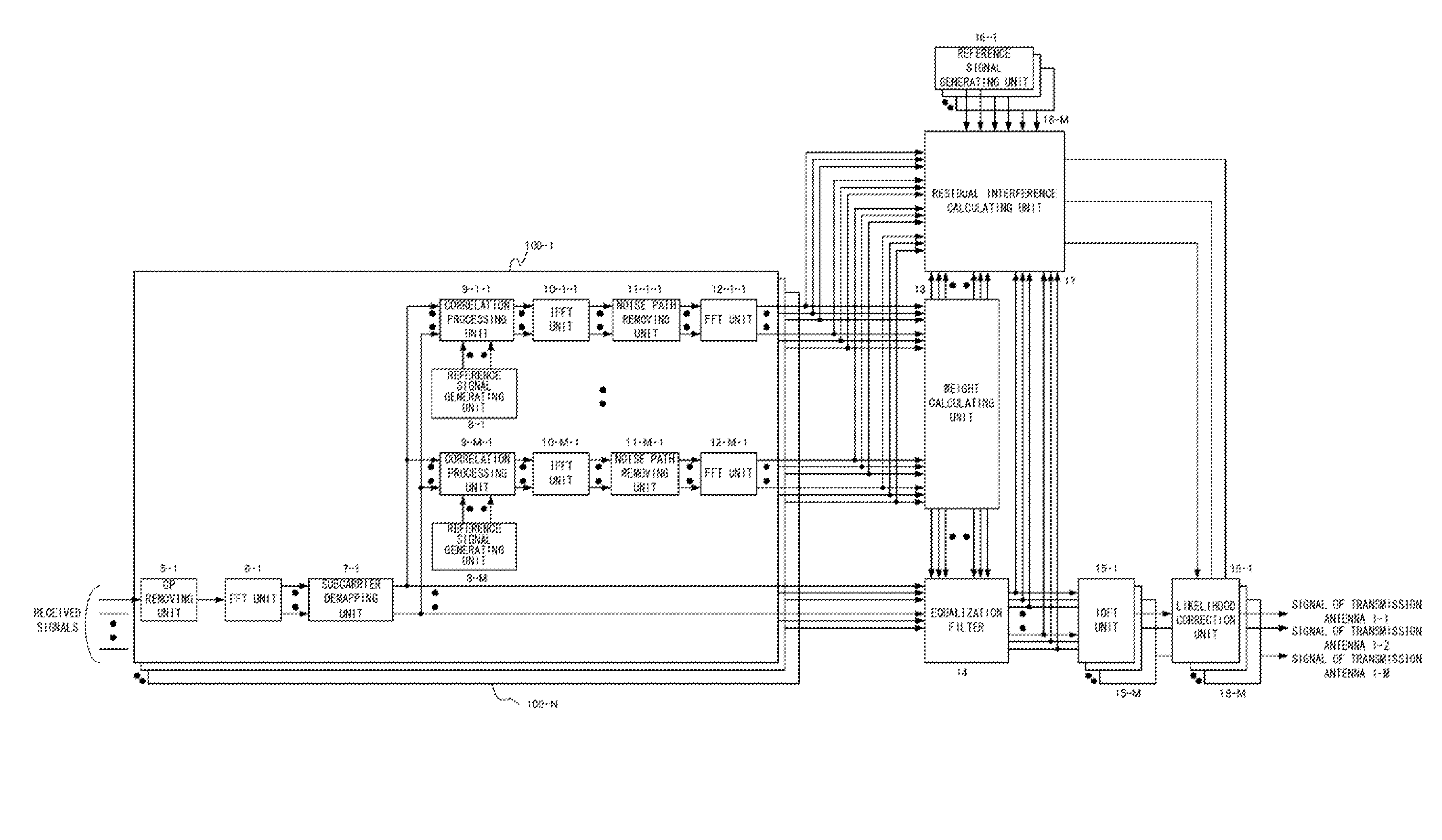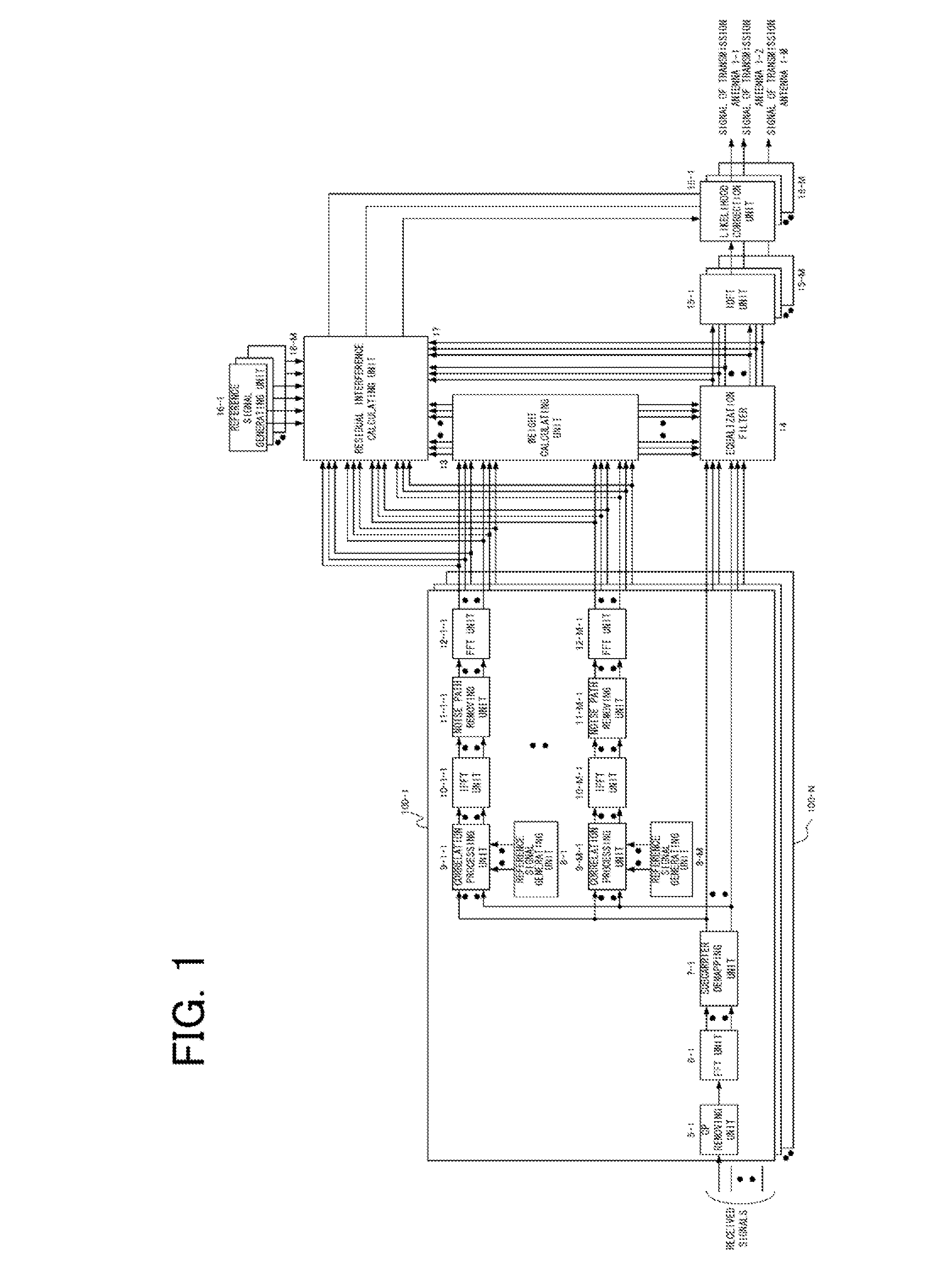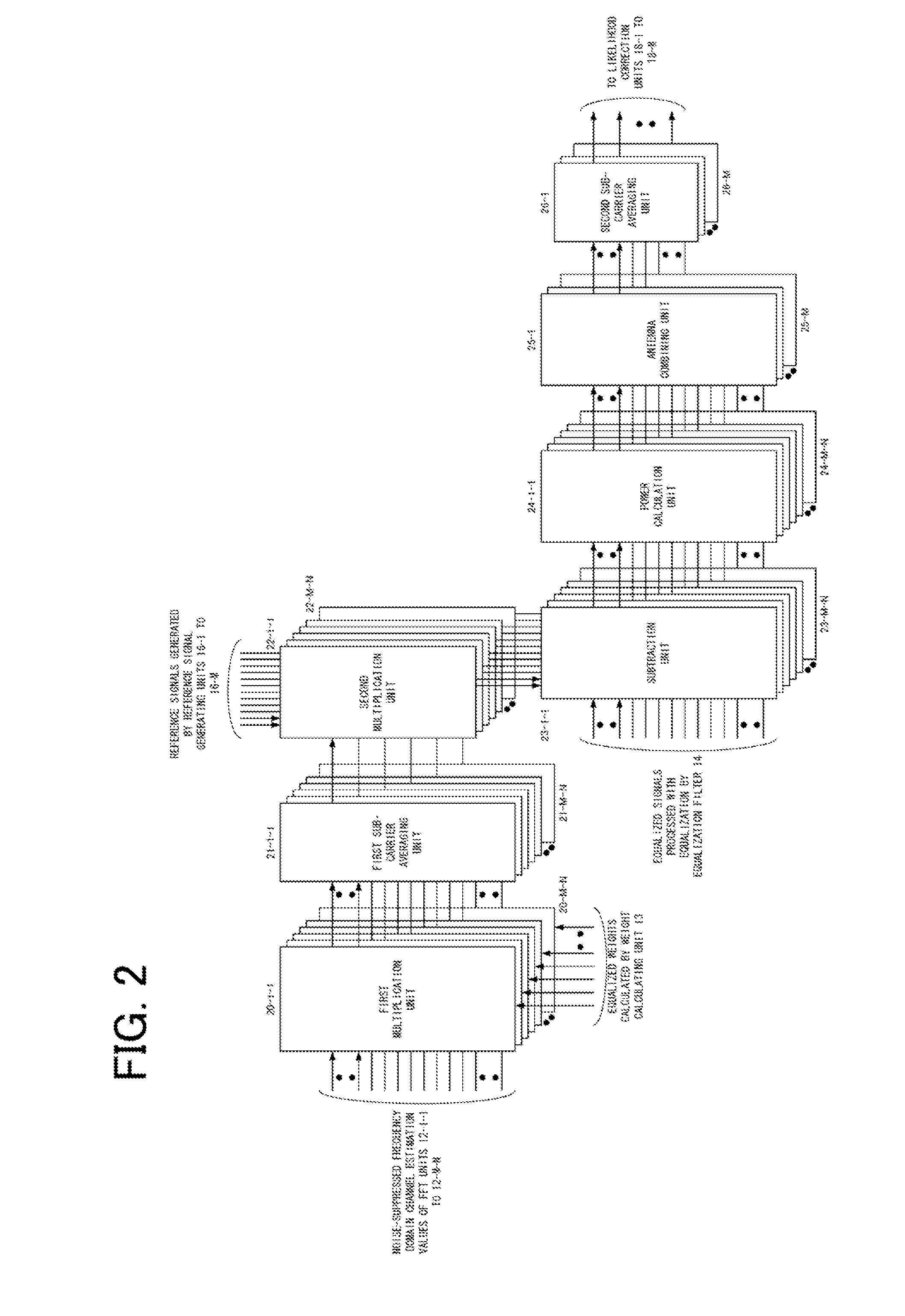Receiving apparatus and method
a technology of receiving apparatus and receiving method, which is applied in the direction of line-faulst/interference reduction, amplitude demodulation, pulse technique, etc., can solve the problems of significant performance degradation, interference from other transmission antennas, and multipaths of desired transmission antenna signal, etc., and achieve optimal equalization performance
- Summary
- Abstract
- Description
- Claims
- Application Information
AI Technical Summary
Benefits of technology
Problems solved by technology
Method used
Image
Examples
Embodiment Construction
[0076]For further detailed description of the present invention, reference is made to the accompanying drawings. FIG. 1 is a block diagram showing a configuration of a MIMO receiving apparatus according to a first exemplary embodiment of the present invention.
[0077]Referring to FIG. 1, the MIMO receiving apparatus, with the number of the transmission antennas being M and that of the receive antennas being N, where M and N are each an integer greater than or equal to 1, is described.
[0078]Referring to FIG. 1, the MIMO receiving apparatus of the present exemplary embodiment includes:
[0079]CP removing units 5-1 to 5-N;
[0080]FFT units 6-1 to 6-N;
[0081]subcarrier demapping units 7-1 to 7-N;
[0082]reference signal generating units 8-1 to 8-M;
[0083]correlation processing units 9-1-1 to 9-M-N;
[0084]IFFT units 10-1-1 to 10-M-N;
[0085]noise path removing units 11-1-1 to 11-M-N;
[0086]FFT units 12-1-1 to 12-M-N;
[0087]a weight calculating unit 13;
[0088]an equalization filter 14;
[0089]IDFT units 15...
PUM
 Login to View More
Login to View More Abstract
Description
Claims
Application Information
 Login to View More
Login to View More - R&D
- Intellectual Property
- Life Sciences
- Materials
- Tech Scout
- Unparalleled Data Quality
- Higher Quality Content
- 60% Fewer Hallucinations
Browse by: Latest US Patents, China's latest patents, Technical Efficacy Thesaurus, Application Domain, Technology Topic, Popular Technical Reports.
© 2025 PatSnap. All rights reserved.Legal|Privacy policy|Modern Slavery Act Transparency Statement|Sitemap|About US| Contact US: help@patsnap.com



